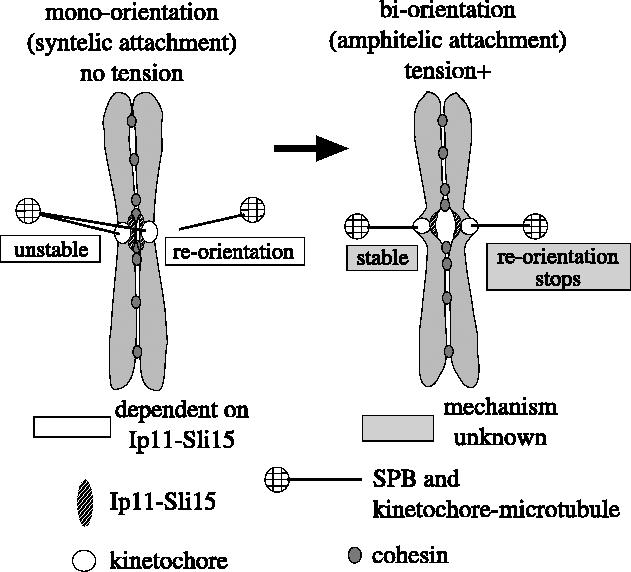Figure 4.

A model on how the Ipl1–Sli15 complex facilitates chromosome bi-orientation. The Ipl1–Sli15 kinase complex facilitates bi-orientation by promoting reorientation of kinetochore–spindle pole connections in a tension-dependent manner (Tanaka et al. 2002; Dewar et al. 2004). Because the syntelic attachment does not generate tension on kinetochore-to-pole connections, the Ipl1–Sli15 complex promotes reorientation of these connections (by phosphorylating kinetochore components; see text). When amphitelic attachment is established, tension is applied on kinetochore-to-pole connections and, thereby, the Ipl1–Sli15 complex stops promoting their reorientation, resulting in preferential selection of the amphitelic attachment. Using a chromatin immunoprecipitation assay and fluorescence microscopy, we and others found that Ipl1 localizes at centromeres similarly in the presence and absence of tension exerted on kinetochores during pre-anaphase (K. Tanaka et al. unpublished; Buvelot et al. 2003). It is still unclear how tension leads to cease of the reorientation.
